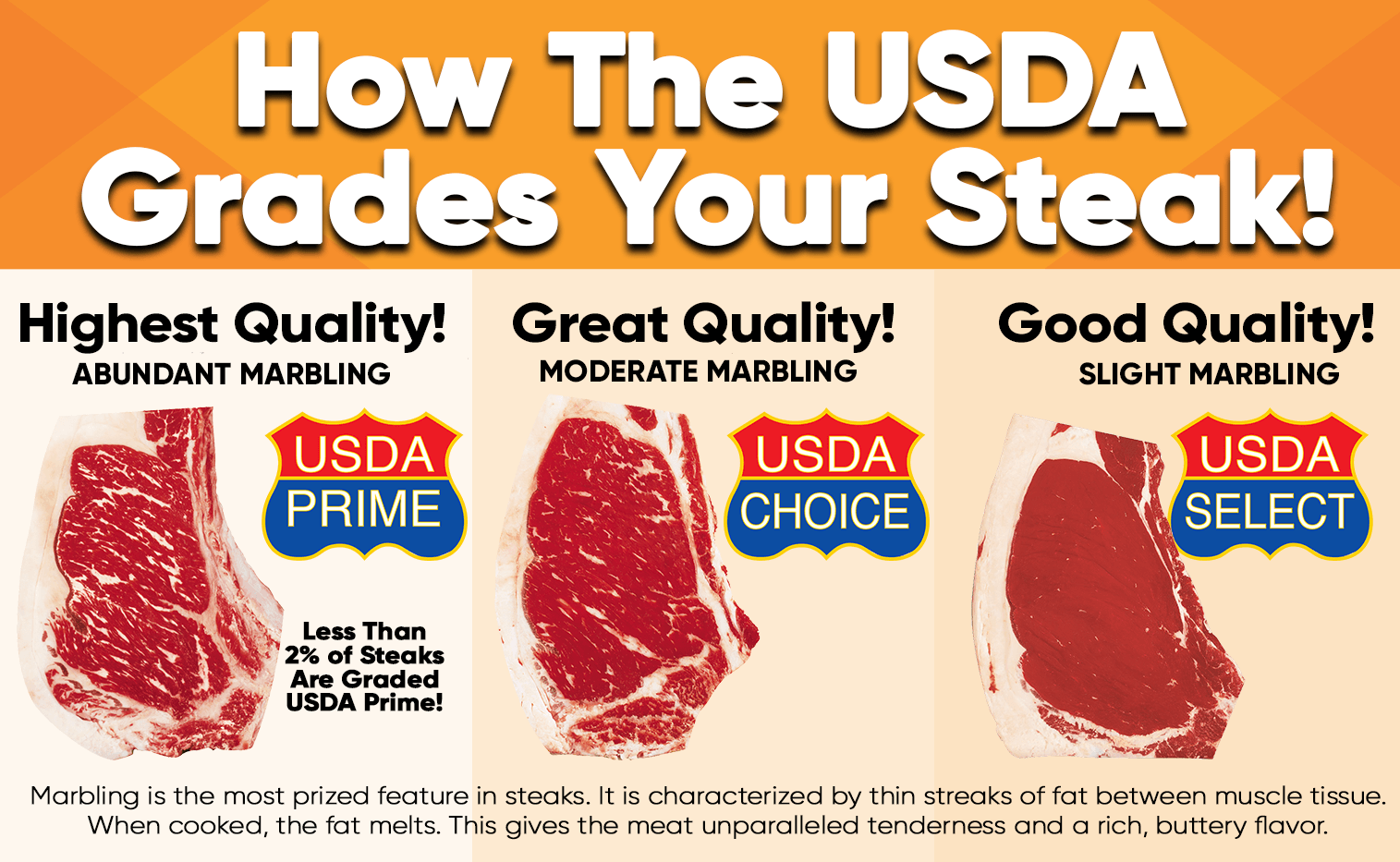How The USDA Grades Your Steak!
Posted on December 26th, 2018 by Sterling GreenIf you’re planning on serving a roast, cooking up some steaks, or making meatloaf, you might want to better understand all of the (sometimes confusing) meat choices.
Our friends at Steak University shared this article about the USDA’s Grading System and it’s standard for all things beef, from ribeye to New York strip.
To make sure you’re getting the best steak possible, it’s important that you understand how the USDA’s system works. With this guide, you’ll learn about the different grades of beef, including Prime, Choice, and Select. You’ll also learn what the USDA looks for when judging cattle, and why marbling and age are so important to quality cuts.
What To Look For And Why
When purchasing steaks, always look for the USDA shield.
The US Department of Agriculture inspects cattle and assigns a grade based on the quality of the beef. The top grade is “Prime,” which is typically served in fine restaurants. The fat marbling in the meat, which specifically comes from “young, well-fed beef cattle,” is a key reason Prime steak tastes so much better. A notch down is “Choice,” commonly found in supermarkets and less fine restaurants. Below that is “Select,” typically leaner, which usually means less juicy and flavorful.
USDA Beef Grades
The USDA has eight grades for beef, But you should always look for the three Upper Cuts: Prime, Choice, and Select
- USDA PRIME is reserved for the best cuts of beef. Just 2% of steaks get labelled USDA Prime. Steaks of this grade are quickly bought by five-star restaurants and upscale wholesalers. Because of this, Prime steaks are rarely found in supermarkets or grocery stores. Prime cuts are sourced from younger steers, and are abundant in marbling and reddish-pink in color. They are the most tender, juicy, and flavorful steaks on the market.
- USDA CHOICE is the step below Prime. USDA Choice cuts are available in most grocery stores and medium-priced restaurants. A Choice steak often has the same reddish-pink color of a Prime cut, but lacks the same level of marbling. The amount of marbling found in Choice cuts can vary widely. It is wise to inspect a Choice steak to see how much marbling it contains. Depending on the cut, a Choice steak may require slower cooking or a marinade to bring out its tenderness and flavor.
- USDA SELECT steaks sit at the lower end of the quality cuts. Because of the low level of marbling found in Select cuts, they usually require marinating. Salt-rich or acidic sauces/marinades can also help tenderize Select steaks, as salt and acids soften and help to break down tougher tissues. Select steaks also benefit from longer cooking times at lower temperatures.
Grading Criteria: What Makes A Great Steak
USDA grades are based on what makes a steak as tender, juicy, and flavorful as possible. There are two main criteria that help graders determine which cattle produce the best beef.
Marbling, also known as “intra-muscular fat,” is the most prized feature in steaks. Marbling is characterized by thin streaks of fat between muscle tissue. When cooked, the fat melts. This gives the meat unparalleled tenderness and a rich, buttery flavor.
Age is another important factor in steak quality. Younger steaks are more tender and flavorful than older cuts of meat. Because of this, most Prime and Choice steaks come from steers 1 to 3 years in age. Steak age is usually determined by the color of the meat, as steaks turn a deeper, darker color as they age.
Now that you know how to find the best steaks, it’s time to put knowledge to practice. With a firm grasp of the USDA grading system, you’ll be able to find high-quality cuts and
Blog, Meat | December 26th, 2018
